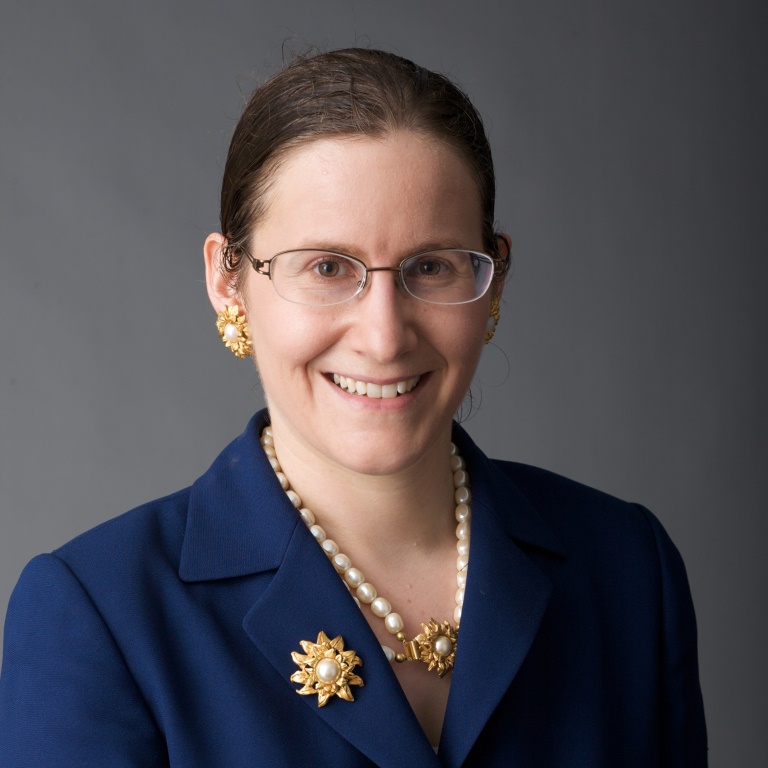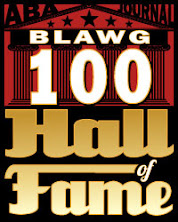Earth Island Institute v. Coca-Cola Co., --- A.3d ----, 2024 WL 3976560, No. 22-CV-0895 (D.C. Aug. 29, 2024)
Earth Island sued Coca-Cola under the D.C. Consumer
Protection Procedures Act, alleging that Coca-Cola engages in deceptive
marketing that “misleads consumers into thinking that its business is
environmentally sustainable, or at least that it is currently making serious
strides toward environmental sustainability.” In fact, Earth Island alleged, “the
sheer scale on which Coca-Cola relies on single-use plastics in its
packaging—and the scale on which it intends to continue using them—renders it
an environmental blight and a fundamentally unsustainable business.” Coca-Cola
touts its efforts to increase recyclability and use more recycled material, but
this allegedly hid “the reality that recycling is not a viable means of
mitigating the environmental harm that Coca-Cola inflicts via its mass
production of single-use plastics—less than ten percent of recyclable plastics
are in fact recycled in the United States.” Coca-Cola allegedly “represents
itself as working toward environmental sustainability, despite no serious
intention of doing the one thing that could actually achieve that goal:
severely scaling down its plastic production.”
The court first found that Earth Justice had standing under
DC law (the DC courts are not Article III federal courts). Despite the
patchwork of sources—Twitter, the Coca-Cola website, other places—from which
the complaint quoted, it was plausible that the general public targeted by the
ads, including in DC, received the basic message “that Coca-Cola is a company
that cares about, and is working meaningfully toward, environmental
sustainability” even if no one person saw all the ads.
Reversing the trial court, DC’s highest court held that this
greenwashing complaint stated a claim.
The most concrete statements outlined Coca-Cola’s goals: (1)
“Make 100% of our packaging recyclable globally by 2025. Use at least 50%
recycled material in our packaging by 2030” And (2) “Part of our sustainability
plan is to help collect and recycle a bottle or can for every one we sell
globally by 2030.” Vaguer statements were more in the vein: “Business and
sustainability are not separate stories for The Coca-Cola Company—but different
facets of the same story.” And Coca-Cola cosigned a statement from the American
Beverage Association: “Together, we’re committed to getting every bottle back.
... Our goal is for every bottle to become a new bottle, and not end up in
oceans, rivers, beaches and landfills. ... This unprecedented commitment
includes ... [p]artnering with [other organizations] to improve recycling
access, provide education to residents and modernize the recycling
infrastructure in communities across the country.”
Earth Island specifically alleged that Coca-Cola wasn’t taking
the steps necessary to meet its concrete benchmarks of (1) making 100% of its
packaging recyclable by 2025, (2) using 50% recycled material in its packaging
by 2030, and (3) recycling a bottle or can for every one it sells by 2030. And,
it argues, Coca-Cola has a “history of making sustainability promises and
failing to deliver on them,” which is “a history that is bound to repeat itself
given that none of Coca-Cola’s business plans or lobbying efforts would enable
it to actually achieve its alleged recycling goals.” Also, given low recycling
rates, even if Coca-Cola could hit the benchmark of making 100% of its
packaging recyclable by 2025, it would allegedly still be “push[ing]
ineffective ‘recycling’ as a viable tool to assuage their environmental
pollution.”
The trial court thought that the challenged statements were
merely aspirational/puffery. But “even
aspirational statements can be actionable under the CPPA because they can
convey to reasonable consumers that a speaker is taking (or intends to take)
steps that at least have the potential of fulfilling those aspirations. Earth
Island alleges that Coca-Cola neither takes nor intends to take any such steps,
and if that is correct, then its representations could mislead reasonable
consumers.”
It was facially plausible that
(1) Coca-Cola is a fundamentally
unsustainable business because of its heavy reliance on single-use plastics
that it has no immediate intentions of eliminating or substantially reducing;
(2) Coca-Cola misleads consumers into thinking that it is serious about hitting
its specific sustainability goals, when its practices say otherwise; and (3)
Coca-Cola’s statements create the misimpression that recycling is a viable
method for substantially mitigating the harm its plastic products cause to the
environment, when it is not.
The court analogized to marketing “light” or “low tar”
cigarettes; marketing them as a healthier option was misleading when they didn’t
offer much if any benefit versus full tar and when they posed substantial
health dangers. Given how Coca-Cola promotes its “World Without Waste”
initiative and trumpets how it is “[s]caling sustainability solutions,” “a
reasonable consumer could plausibly think that its recycling efforts will put a
serious dent in its environmental impacts.” But Earth Island plausibly alleged
that it wouldn’t given low recycling rates of recyclable plastics. “That is,
when it promotes its recycling efforts, it omits the fact that those efforts
will not prevent the vast bulk of its plastic products from ending up as waste
or pollution, a deception that Earth Island alleges Coca-Cola very much
intends.” Likewise, it was plausible that “a reasonable consumer would think
Coca-Cola was taking the steps necessary to achieve its stated goals,” and it
allegedly was not.
Of course, this was all subject to proof:
We do not presume to know what
reasonable consumers understand a company to mean when it claims that it is
working to be “more sustainable” or the like. For all we know, reasonable
consumers would immediately dismiss that type of speech as vacuous corporate
jargon, not to be relied upon. But that is not obviously true; the concerted
efforts that companies like Coca-Cola make to cultivate an image of being
environmentally friendly strongly suggests that even their vague assurances
have a real impact on consumers. Further, even if reasonable consumers take
Coca-Cola’s statements to mean that it is taking substantial strides to improve
the environment, it is not at all obvious at this stage of the proceedings
whether Coca-Cola’s efforts on the ground align with those statements. But
those are questions of proof that cannot be settled at the motion to dismiss
stage.
So, puffery was still an issue, but it was an issue for the
factfinder.
The court rejected “more rigid approaches” to puffery, such
as that where a statement’s “truth or falsity ... cannot be precisely
determined,” it is puffery. But the cited case that puffery includes “the
exaggerations reasonably to be expected of a seller as to the degree of quality
of his product, the truth or falsity of which cannot be precisely determined.” The
first part of that definition—reasonably expected exaggerations—was vital to
the second. “[B]usinesses cannot insulate themselves from suit simply by
avoiding concrete claims. Vague and ambiguous statements, incapable of being
strictly true or false, may yet be actionable as misrepresentations.” The court
here preferred defining puffery as (1) “general claim[s] of superiority ... so
vague that [they] can be understood as nothing more than a mere expression of
opinion,” and (2) “exaggerated, blustering, and boasting statement[s],” quite
capable of being adjudged false, but “upon which no reasonable buyer would be
justified in relying.” “Red Bull gives you wings” can’t be taken literally, but
“might be actionable if it gave reasonable consumers the impression that Red
Bell provided significant benefits over a cup of coffee or caffeine pill, at
least if that were not the case.” In short, “statements that might be deemed
puffery if interpreted to mean one thing in one context, might very well be
actionable misrepresentations if taken to mean a different thing in a different
context. The doctrine is not conducive to hard-and-fast rules, and typically
raises a question for the factfinder.”
The court also rejected Bimbo Bakeries USA, Inc. v.
Sycamore, 29 F.4th 630 (10th Cir. 2022), which overturned a jury verdict
finding that a bakery engaged in false advertising when it billed baked goods
it sold in Utah as “local,” despite the fact that they were made exclusively
out-of-state, as far away as Alaska. The Bimbo Bakeries court concluded
that the word “local” was “an indeterminate and unverifiable adjective,” so it
was not any “description of fact,” because “the word local cannot be ‘adjudged
true or false in a way that admits of empirical verification.’ ” Of course “local”
has a range of meanings.
[I]t is just as obviously true that
some things fall outside that range of meanings, often depending on context. To
illustrate, here in the District, if somebody says they support the “local” NFL
team, you would most naturally think they are supporters of the Washington
Commanders, though they might also fairly be referring to the Baltimore Ravens,
given that Baltimore is less than forty miles away (i.e., there’s a range that
“local” might fairly apply to). But if they are in fact fans of the Los Angeles
Rams—a team that hails from more than two thousand miles from here (just as
some of the baked goods in Bimbo Bakeries came from Alaska, more than two
thousand miles away from Utah)—then they have undoubtedly deceived you.
The court here also specifically rejected Bimbo Bakeries’s
“hostility toward consumer survey evidence as one viable evidentiary tool for
discerning how reasonable consumers understand various advertisements.” The
court further noted that the Fifth Circuit’s analysis in Papa John’s
contradicted Bimbo Bakeries—Papa John’s held that even a claim as
vague and opinion-laced as “Better ingredients. Better Pizza.” could be
actionable “when coupled with a comparison to a competitor’s ingredients that
were not discernibly different.”
Nor was it dispositive that the statements were
aspirational. An aspirational statement can be reasonably “interpreted to be a
representation about the defendant’s present intent ... to act as stated.” Mere
failure to achieve stated goals couldn’t support a misrepresentation claim, but
a showing that Coca-Cola never even intended to do anything that could achieve
them would.
Coca-Cola next argued that the statements at issue weren’t
about “goods and services” as required by the CPPA. But claims about plastic
packaging were very much about “goods and services,” defined broadly in the law
to include “any and all parts of the economic output of society, at any stage
or related ... in the economic process.”
Finally, the statements could properly be considered in the
aggregate, although a litigant would not be allowed to “unfairly strip isolated
statements out of their context and then cobble them together to form an
unrepresentative tapestry of what has been conveyed.” Earth Island was
targeting only statements that Coca-Cola was still making today. Discovery and
trial could be reasonably tailored to those. Earth Island was not offering a “grab
bag” of statements nor arguing that they should be read out of context. “Businesses
can drive points home through repetition or supplementation, and where a
consumer sees Coca-Cola billing itself as sustainable in one ad on a Monday,
and then sees a different ad on Thursday with a similar message, the mere
repetition of a point can have a cumulative effect on a reasonable consumer.”
Maybe consumers wouldn’t have reacted that way, maybe not; “[i]t is plausible
enough that a consumer curious about Coca-Cola’s environmental impacts would
come across the variety of statements relied upon by Earth Island through some
casual Googling.”
The First Amendment didn’t bar the suit. Earth Island challenged
Coca-Cola’s commercial speech about its goods and services, although relief
would have to preserve its First Amendment rights.



















